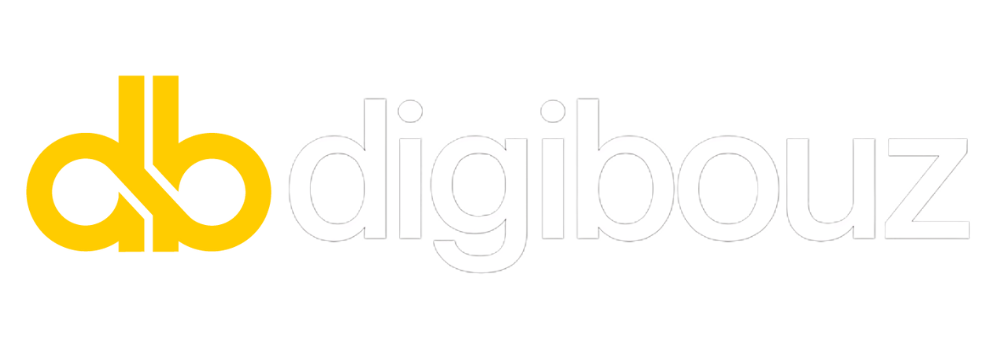Marketing refers to the overall process of promoting a product or service, encompassing various strategies and tactics. It includes marketing communications that aim to build trademark awareness and achieve specific marketing goals. In contrast, advertising is a subset of this broader concept, primarily focusing on delivering a message through paid channels like traditional advertising and social media marketing.
Marketers often collaborate with an advertising agency to create promotional campaigns that effectively promote a product. While advertising is one component of marketing, it utilizes various marketing tactics such as email marketing, influencer marketing, and content marketing. Understanding the difference between marketing and advertising is a vital form of advertising that captures immediate attention, for any marketing team aiming to optimize their marketing mix and enhance product development.

Marketing is a broader concept that encompasses various activities aimed at promoting products and services. While advertising is a part of this process, the difference between advertising and marketing lies in their scope. Advertising involves paid media and specific campaigns, whereas marketing aims to build relationships and includes public relations.
Advertising and marketing share common goals, but their approaches differ. Marketing uses various strategies, including native advertising and other promotion strategies, to engage audiences. Ultimately, developing a marketing plan is essential for aligning marketing or advertising efforts with the overall goal of marketing.
In modern marketing, advertising is a part of a larger strategy that may incorporate a subset of online advertising. Marketing or advertising efforts can be used interchangeably, but understanding their unique roles helps businesses effectively reach their target audience. Common examples of this interplay include promotional campaigns that leverage both paid media and advertising are often intertwined in the marketing process.organic outreach.
Marketing involves creating strategies to promote products or services, focusing on long-term label building and customer relationships. Advertising, a subset of marketing, specifically aims to promote through paid channels like TV, digital ads, or print. While marketing encompasses broader strategies, advertising is direct and short-term, targeting immediate sales or awareness.
Marketing is a broad strategy that involves research, product development, and customer engagement to build long-term relationships. Advertising, a component of marketing, focuses on promoting products through paid channels like TV, online ads, and print. While marketing builds trademark loyalty, advertising aims for immediate visibility and sales.
Marketing and advertising are crucial for business success. Marketing builds label awareness, engages customers, and fosters long-term relationships, while advertising drives immediate visibility and sales. Together, they help businesses reach target audiences, differentiate from competitors, and drive growth, making them essential for sustained success in a competitive market.
Marketing and advertising strategies are essential for any business. A company pays for these efforts to boost visibility and sales. Overall marketing encompasses various approaches, including developing advertising campaigns that align with business goals.
Comprehensive marketing covers several types of media, ensuring broad reach. Effective use of social media channels can enhance engagement, while traditional print media remains relevant. Examples include targeted ads, influencer collaborations, and email marketing, all of which play a crucial role in making advertising more impactful.
Traditional marketing encompasses methods like print ads, TV commercials, and billboards, relying on direct consumer interaction and broad reach. It’s often more tangible, creating a lasting impression.
In contrast, online advertising utilizes online framework such as social media, email, and search engines, allowing for targeted campaigns and instant feedback. This approach also offers measurable results, enhancing strategy effectiveness.
Billboards offer a high-visibility framework for advertisers, capturing the attention of commuters and pedestrians alike. Their large format makes them ideal for impactful visuals and concise messaging.
Social Media advertising allows trademark to target specific demographics, leveraging user data to optimize reach and engagement. This dynamic medium encourages interaction and community building.
Other advertising types, such as print and radio, provide diverse avenues for reaching audiences, each with unique benefits and challenges that cater to different marketing tactics.
When choosing the right marketing tactics, it’s essential to assess your target audience. Understanding their preferences allows for more effective engagement.
Additionally, consider your budget and resources. Selecting tactics that align with financial constraints can maximize ROI.
Finally, regularly analyze results and be willing to adapt strategies to enhance performance and reach.

To develop a successful marketing campaign, first, identify your focus audience. Understanding their needs is crucial. Next, set clear objectives that align with your business goals. Include social media strategies to enhance engagement and reach wider audiences. Finally, evaluate the campaign’s performance and adjust tactics as needed for continuous improvement.
Creating a marketing plan involves setting clear goals, understanding the focus audience, and analyzing competitors. It includes choosing marketing channels, developing a content strategy, and defining metrics for success. A well-structured plan outlines the budget, timeline, and actions required to effectively promote a product or service and achieve objectives.
Market research plays a vital role in marketing by providing insights into customer preferences, behaviors, and trends. It helps businesses understand market demands, identify opportunities, and assess competition. By gathering data, companies can make informed decisions, tailor their strategies, and enhance product offerings, leading to better-targeted marketing efforts.
Measuring the success of a marketing campaign involves tracking key performance indicators (KPIs) like sales, website traffic, conversion rates, and customer engagement. Analyzing these metrics helps determine if campaign objectives were met. Regular monitoring allows businesses to adjust strategies, optimize efforts, and improve future campaigns for better results.

Online advertising has transformed the advertising landscape by becoming an essential part of marketing. Unlike traditional methods, it emphasizes engagement and connectivity through social framework.
For instance, examples of earned media include shares and mentions on social media, showcasing user-generated content.
This shift prompts businesses to reflect on what’s the difference between marketing strategies, focusing more on interactive and targeted approaches.
As a result, trademark must adapt to stay relevant in the dynamic digital environment.
Digital Advertising is a dynamic subset of marketing that leverages online framework to reach prospective clients effectively. It encompasses strategies like social media ads, search engine marketing, and display advertising.
This approach allows businesses to engage with consumers in real-time, optimizing campaigns based on data analytics.
With its precision targeting and measurable results, online advertising significantly enhances traditional marketing techniques, driving higher engagement and conversion rates.
Utilizing Social Media Platforms for Marketing is essential in today’s digital landscape. These framework allow labels to engage directly with their audience, fostering genuine connections. By creating targeted content and leveraging analytics, businesses can enhance their outreach and drive conversions effectively.
Moreover, advertising on social media offers cost-effective solutions, enabling labels to reach potential customers based on their interests and behaviors. This tailored approach increases engagement and trademark awareness, making social media a powerful tool for modern marketing tactics.
Innovative Digital Marketing Strategies leverage cutting-edge technologies to enhance label visibility. Utilizing personalized content, businesses can engage audiences effectively.
Social media platforms and influencer collaborations drive authentic connections. Additionally, data analytics allows for real-time adjustments, optimizing campaigns for maximum impact.
Embracing AI and automation tools streamlines efforts, making marketing more efficient and effective.

Branding is crucial in marketing and advertising as it establishes an identity that resonates with consumers. A strong label fosters recognition and trust, enabling businesses to stand out in a crowded market. Moreover, effective branding influences social connections, turning customers into loyal advocates who share their experiences.
Incorporating a consistent label message enhances customer loyalty and retention. When consumers identify with a label, they feel a sense of belonging, which is essential in today’s social landscape. Ultimately, successful branding drives not only sales but also a community of engaged supporters.
Building a strong brand identity is essential for distinguishing your business in a crowded market. It involves creating a coherent visual style and messaging that resonates with your prospective clients.
A well-defined label identity fosters trust and recognition, making it easier for customers to connect with your products or services. Consistency across all platforms reinforces your brand’s core values and mission.
Brand promotion is crucial for establishing a strong market presence. Through various marketing activities, businesses can effectively communicate their value proposition and engage with prospective clients.
Utilizing strategies such as social media campaigns, influencer partnerships, and events can enhance visibility and foster brand awareness.
Consistent messaging and creative content are essential in capturing consumer attention and driving conversions.
Branding plays a crucial role in shaping how a prospective clients perceives a company. Through effective trademark strategies, businesses create an emotional connection, fostering loyalty and trust.
Engaging with consumers through consistent labeling enhances recognition and recall, making it more likely they will choose a label over competitors.
Ultimately, strong trademark can transform casual customers into dedicated advocates, amplifying word-of-mouth referrals.
Inspiration Meeting:
We'll call you
Digibouz is a web developer located in the heart of the Randstad, between cities and towns such as Amsterdam, The Hague, Haarlem, Katwijk, Leiden, Noordwijk, Rijnsburg, Rotterdam, Utrecht, and Valkenburg.
Digibouz is a web developer located in the heart of the Randstad, between cities and towns such as Amsterdam, The Hague, Haarlem, Katwijk, Leiden, Noordwijk, Rijnsburg, Rotterdam, Utrecht, and Valkenburg.
